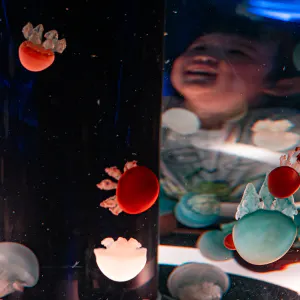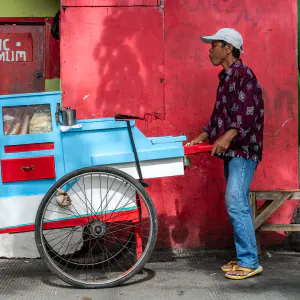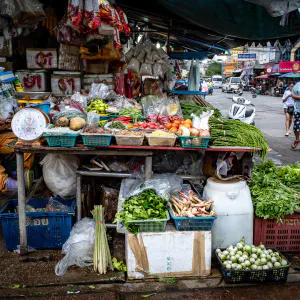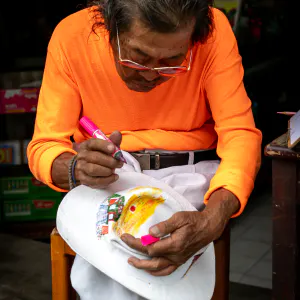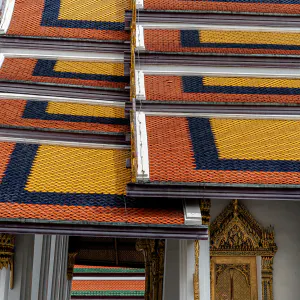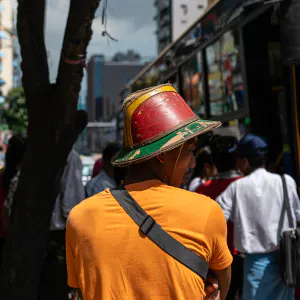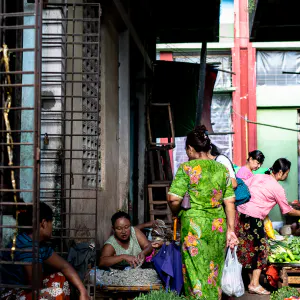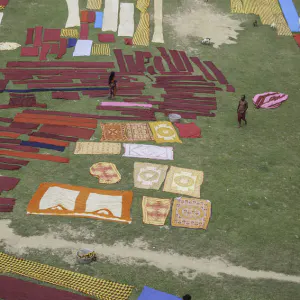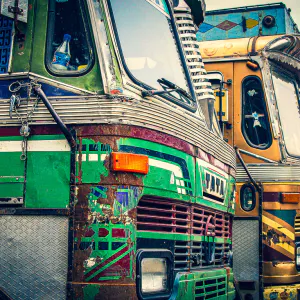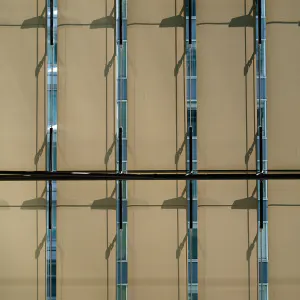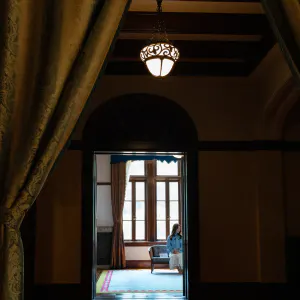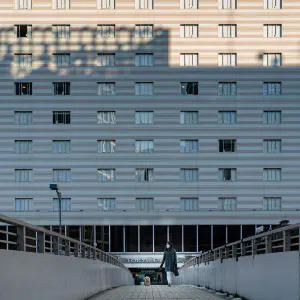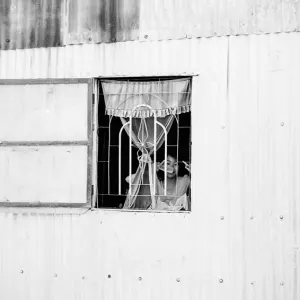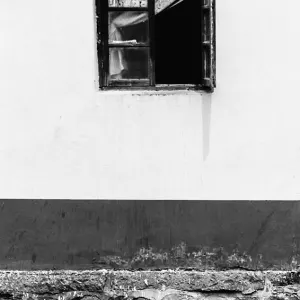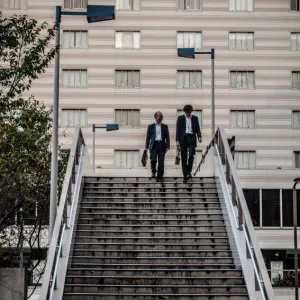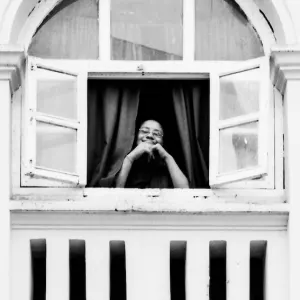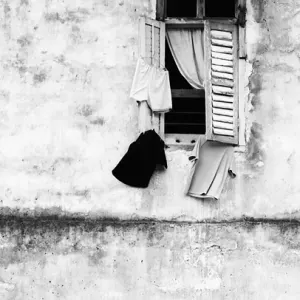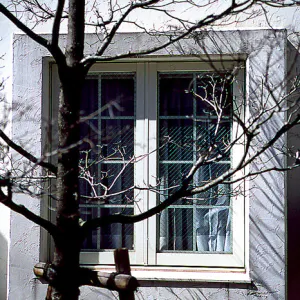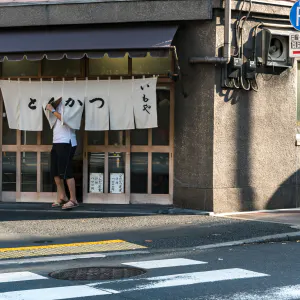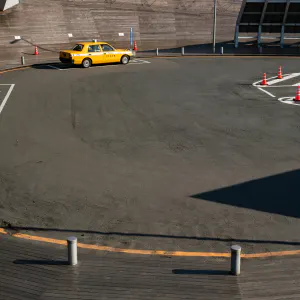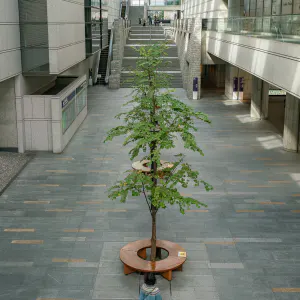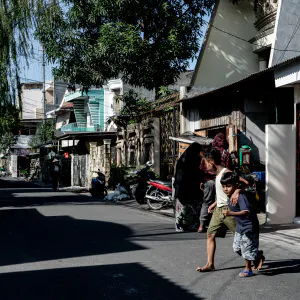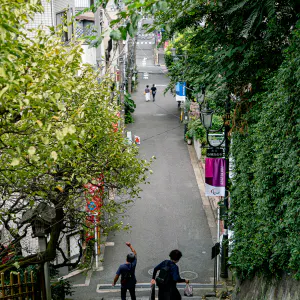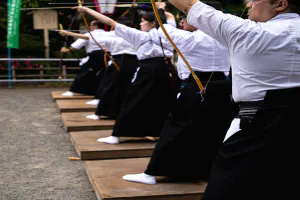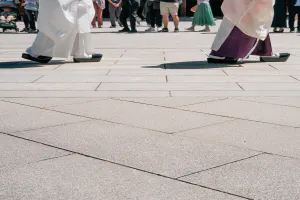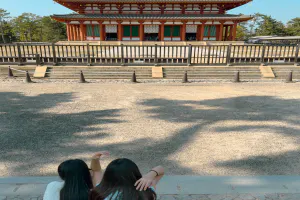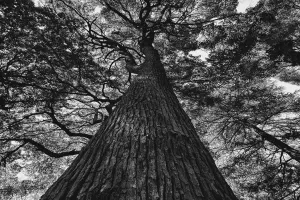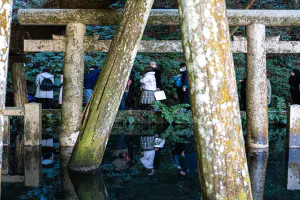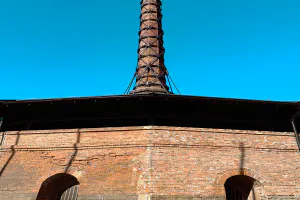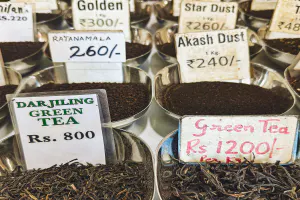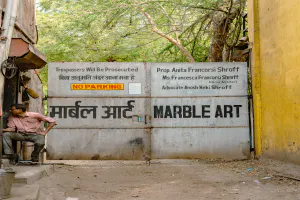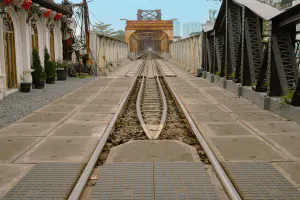In a park built on a former outer moat, a lovely building that looks like it could be in a Wes Anderson movie stands
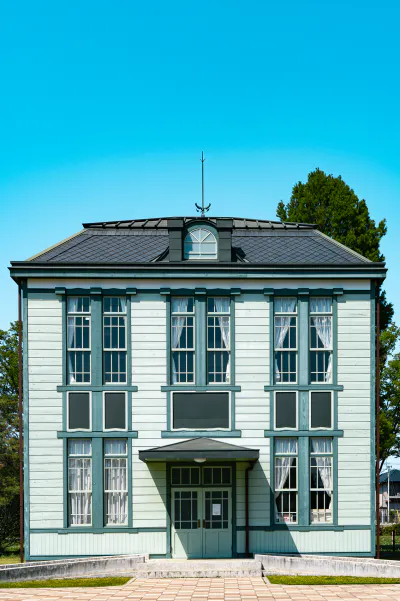
There is a park called Water Castle Park in Gyoda. Although not a very large park, when one hears that this park was built on the site of the outer moat of Oshijo Castle, it is understandable why Oshijo Castle, which withstood water invasions using the Tone River in the past, was called a floating castle. Although we can only imagine it now, Oshijo Castle rising above the spacious outer moat must have looked as if it were floating in the water.
Walking through the park that used to be the outer moat, a building with an appearance that is disproportionate to its history as a castle came into view. It is the former Oshimachi Credit Union Building. This wooden Western-style building was originally built in 1922 and moved to its current location in 2018, and this style is apparently called the "clapboard colonial" style. The building, with its bright green painted exterior, has become a solitary presence in the park, out of place among its peers.
The colonial style of "clapboard colonial" refers to the American architectural style of the colonial period and "clapboard" refers to the unpainted exterior walls made of horizontal layers of wood planks. In the past, with the establishment of the Hokkaido Kaitakushi (Hokkaido Development Office), Japan apparently received technical assistance from the United States, which was also a member of the wooden culture, and promoted the introduction of wooden architecture based on American architectural styles and construction methods. The architecture that emerged under American influence is called the "clapboard colonial style". Since this architectural style was originally developed in the U.S., it is no wonder that it does not look like Japan, and as I looked at it, I felt as if it could have appeared in a Wes Anderson movie.
| Nov 2023 ARCHITECTURE SAITAMA | |
| CURTAIN GYODA PARK VIVIDNESS WINDOW |
PHOTO DATA
No
12537
Shooting Date
May 2023
Posted On
November 15, 2023
Place
Gyoda, Saitama
Genre
Architectural Photography
Camera
SONY ALPHA 7R V
Lens
ZEISS BATIS 2/40 CF
